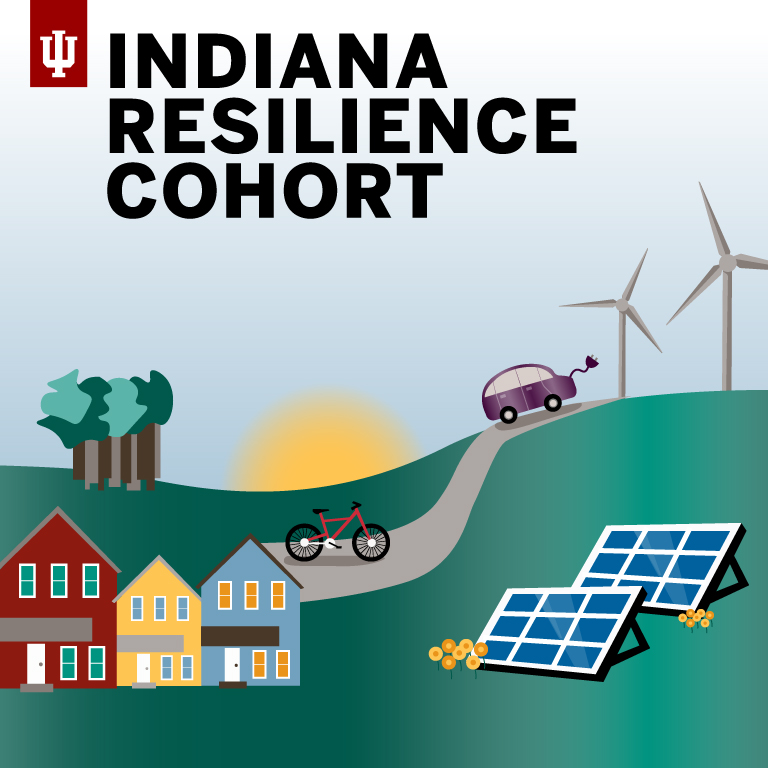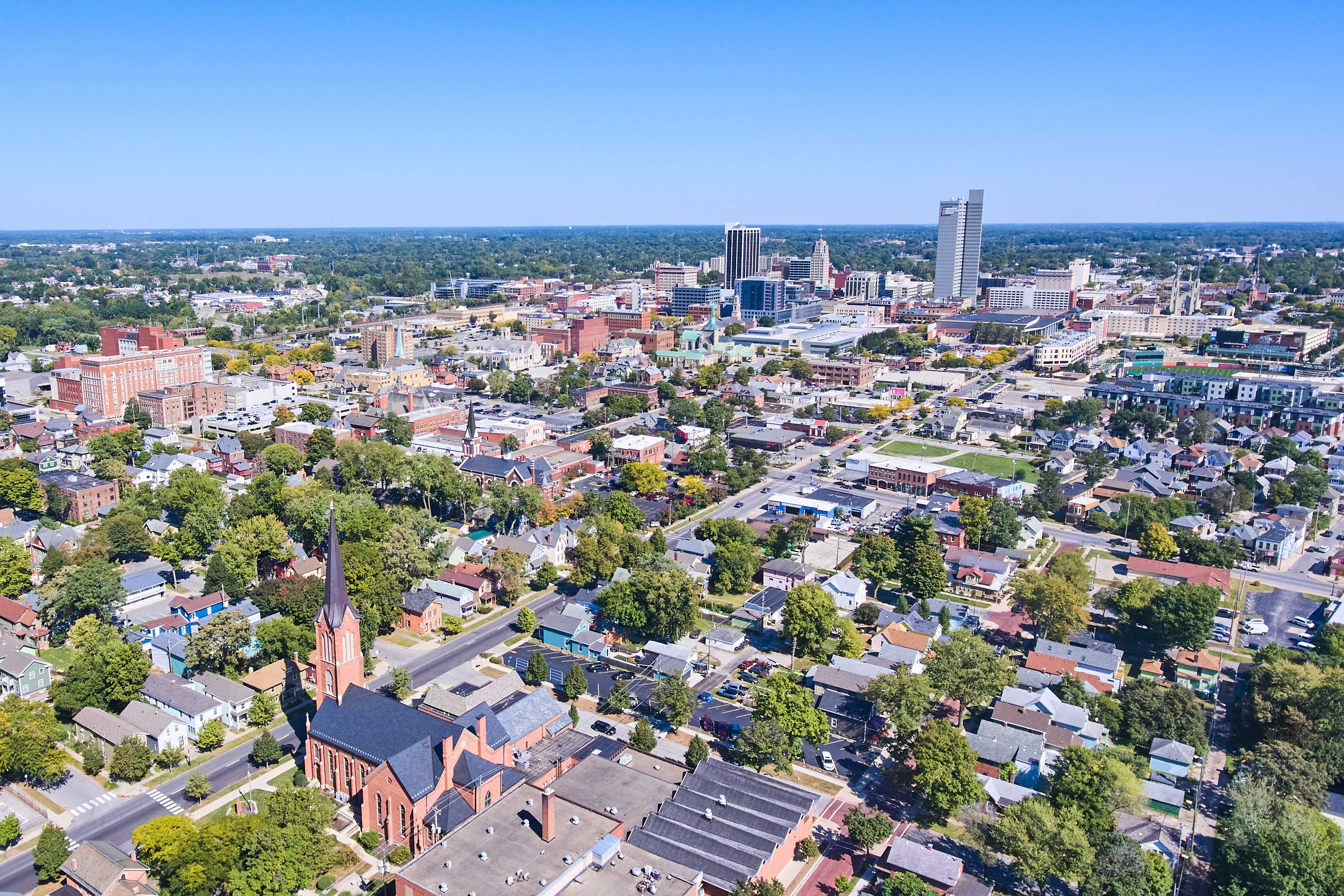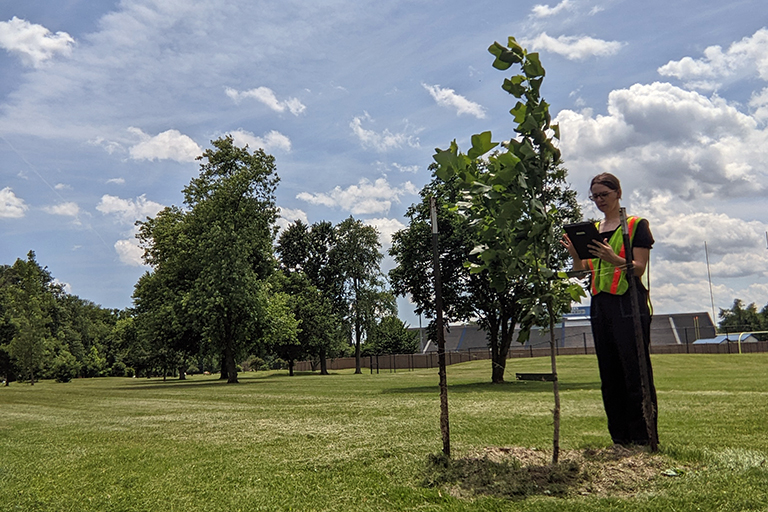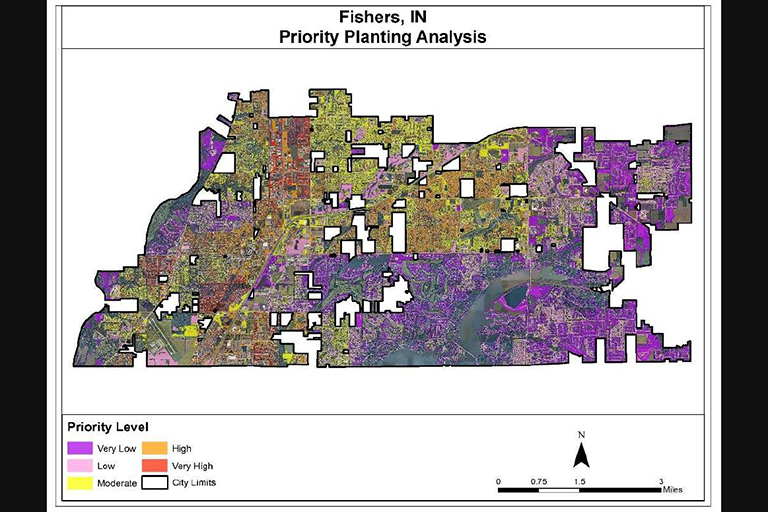Nine Hoosier communities assessed the health of their local tree canopies and developed plans to expand them this summer in partnership with Indiana University’s Environmental Resilience Institute (ERI). The resulting roadmaps give each local government a clear path for adding new green infrastructure that helps to offset the effects of climate change and maximize community benefits.
As climate change brings more heavy rainfall and heat waves to the Midwest, communities are recognizing the benefits of robust urban tree canopies, including flood protection, temperature moderation, and habitat for wildlife.
Through ERI’s Resilience Cohort, the communities gained access to experts and resources to create a snapshot of their trees and identify sites for new plantings. In total, the assessments covered more than 245,000 acres and identified more than 60,000 acres of land well-suited for tree planting across the nine communities.
Participating local governments included Fishers, Fort Wayne, Huntington, Lafayette, Merrillville, Terre Haute, Tippecanoe County, West Lafayette, and Zionsville. Funding for the program was provided by the McKinney Family Foundation, the Indiana Department of Natural Resources, and ERI donors.
“Urban forests can play a key role in helping Indiana’s communities build resilience to climate change,” said ERI Managing Director Sarah Mincey. “By prioritizing trees and equity-based planting plans, these local governments are investing in the health and well-being of their residents, particularly residents who may not live in close proximity to trees today.”
Each community hosted a McKinney Climate Fellow to lead the canopy assessments, engage community stakeholders, and recommend priority planting areas. To create tree-planting plans, fellows relied on tree canopy data provided by Davey Resource Group, an environmental consulting agency. Training sessions curated by ERI in collaboration with partners also engaged participants on grant writing, updating tree ordinances, and carbon markets.
With their plans in hand, each community is now pursuing opportunities to apply them.
The Town of Zionsville’s tree planting plan includes five priority planting areas on land owned by the town, including rights-of-way near new housing developments, areas in and around parks and recreational trails, and stretches of new roads that are facilitating development in the community.
With the town projected to double its population by 2050, the plans will play an important role in shaping the future of the community, said Carol Johnson, executive assistant to the mayor of Zionsville.
“We are so excited to have some legitimate, actionable sites for tree planting as a result of this program,” Johnson said. “Now that we have the canopy assessment and the planting plan, we expect that we can target our priority areas for completed plantings within the next few years.”
In Terre Haute, socioeconomic information included in its tree planting plan is guiding city decision makers as they allocate resources.
“In our community, we found that the poorer the area is, the fewer trees they have,” said Ana Erazo, an urban forester with the City of Terre Haute. “Our tree canopy assessment and planting plan now includes important characteristics about our residents, such as income, population density, and minority populations that help us target our investments to these areas.”
The City of Lafayette is using its tree planting plan to select sites for the location of 200 trees they intend to plant each year for the next several years, while the City of Fishers is turning to its urban tree canopy assessment to guide studies about the quality and connectivity of their local ecosystems and habitat.
Several local governments have also incorporated their urban tree canopy assessments and planting plans into their climate action plans, using them as a springboard for further climate action.
“We’re thrilled to see that communities are using this work to secure additional grant funds, plan for further climate action, and ultimately improve the quality of life for Hoosiers around the state,” Mincey said.
View the 2022 urban tree canopy assessment report
About the Environmental Resilience Institute
Indiana University’s Environmental Resilience Institute brings together a broad coalition of government, business, nonprofit, and community leaders to help Indiana and the Midwest better prepare for the challenges of environmental change. By integrating research, education, and community, ERI is working to create a more sustainable, equitable, and prosperous future. Learn more at eri.iu.edu.






